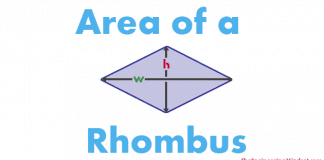Pump head pressure basics, learn why pumps read pressure in height and call it head pressure.
Scroll to the bottom to watch the YouTube tutorial.
Head is shown on the vertical axis and this is referring to pressure so we often hear the term ‘head pressure’. We measure head in feet or meters which doesn’t seem correct considering we’re talking about pressure. Especially as you see the pressure gauges on the pump typically reading PSI or bar.
The reason for feet or meters is that pump manufacturers only know how high their pump can push a liquid. They wont know which liquid your system will be pumping and as each liquid has different properties, the pressure will vary depending on the liquid used. However, the height can be moved but the pump will remain the same. For example we have this pump which can provide 125 feet of head. If we use it to pump water, the pressure will be around 54.25 PSI but if we were use it to pump milk then the pressure will be around 56.15 PS and that’s because of the properties of the two fluids.
Why do we Need to Know the Head Pressure?
Pumps are usually used to move liquid to a higher region so we need to ensure the pump can reach this elevation as we pump liquid through the pipes and the fittings. Friction will try to oppose the flow. This occurs from the walls of the pipe but also disturbances to the flow pipe. This causes pressure losses which waste energy from the pump. The amount of friction depends on the liquid type as well as the materials and fittings used. Therefore we must calculate how much friction or pressure loss our system will generate and ensure that the pump we select can overcome this. Otherwise we’re no going to get any liquid out the upper end. When we look at the pump charts well find pumps ranging in head and flow rate. For example when we look at a small domestic heating system there are few fittings and short pipes, therefore we would use a pump with a relatively low head pressure. But if we were to look at a commercial heating system with multiple air handling units, fan coils and long pipe links- then we know the pressure drop will be much higher so we would need a pump that can provide much more head pressure. Each type of pump has a different chart and the data plotted on them also varies with the model. The first thing we notice is that on the main vertical y-axis we have the head pressure and on the vertical x-axis we have the flow rate. Basically speaking the head is pressure and the flow rate is how much water the pump can move, so what do these charts represent? If we turn the pumps sideways and connected it to a pipe, the pump is pushing the liquid horizontally so there is no pressure. But the water is flowing at its maximum flow rate. As we slowly rotate the pump towards the vertical position, we see the flow rate decreases but the pressure increases. That’s because its now pushing against the water and the friction. As we get all the way to the vertical position there is zero water flowing out of the pump but maximum pressure. And that’s because its using all its energy to push against the water and hold it as high as it possibly can within the pipe. At this point its just spinning the same bit of water which isn’t good for the pump so you don’t want to run a pump like this in the real world. By recording the values during the elevation we basically get our pump curve although I will note the pump manufacturers don’t test pumps this way because its just not practical. The flow rate is a measurement of how much liquid is flowing from the pump in a given amount of time. This measurement comes in many different units for gallons per minute litres per second or cubic metres per hour. For example, a system might be designed to move two litres of water per second from a holding tank to a process tank.


















